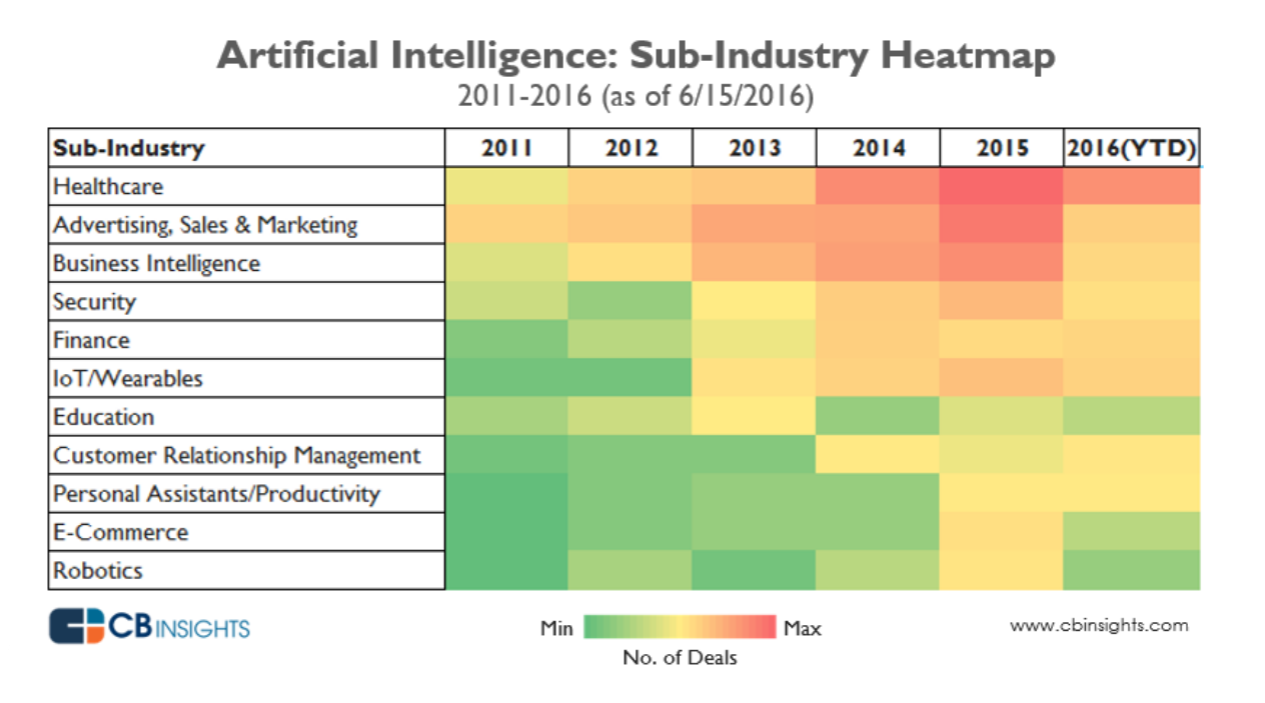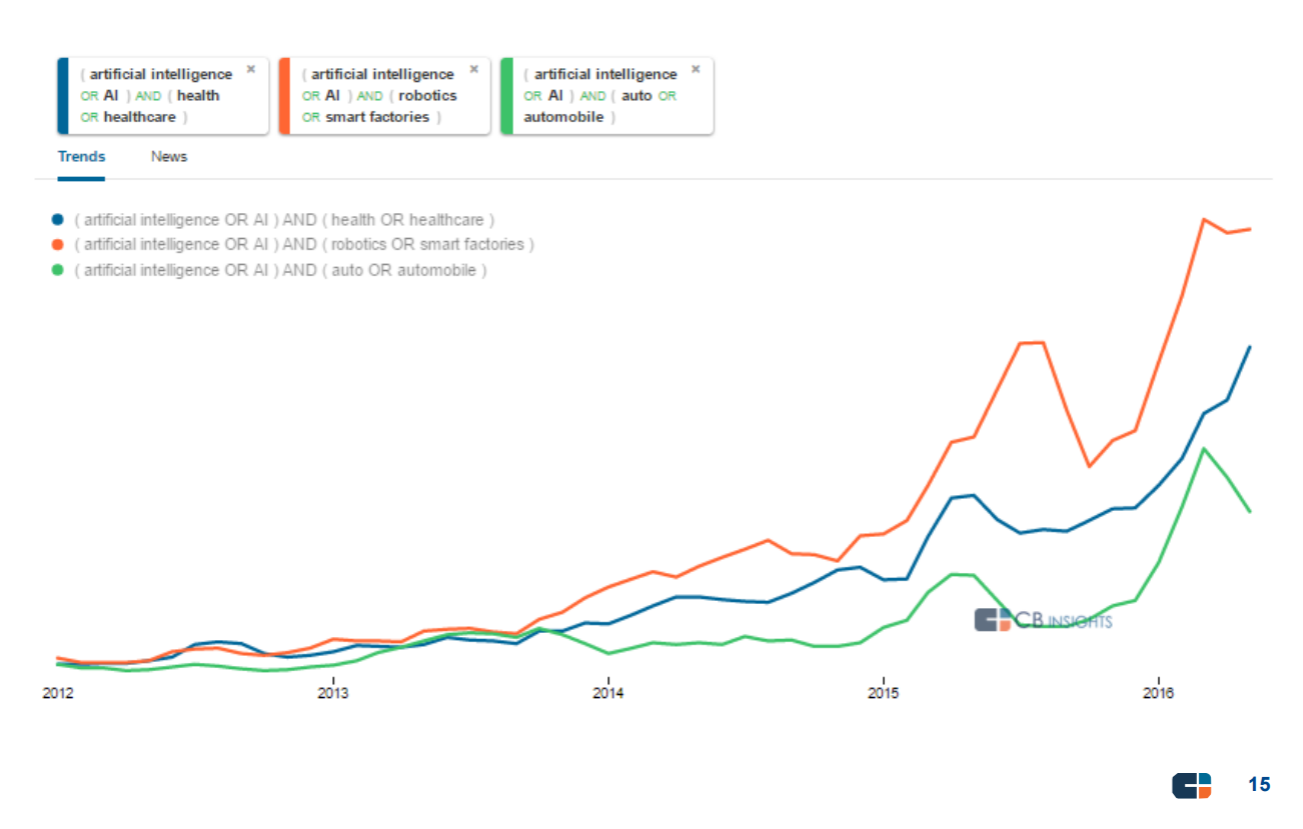
Getty Images
How Do Artificial Intelligence, Machine Learning Differ in Healthcare?
Machine learning is a necessary first step towards artificial intelligence in healthcare, but they aren’t the same thing.

If the futurists, visionaries, and venture capitalists are to be believed, artificial intelligence is right on the cusp of becoming the most important breakthrough for healthcare since penicillin.
Self-driving cars, scary-smart advertising, and virtual home assistants are just the beginning, they proclaim. Hospitals must brace themselves for a complete transformation – a revolution – a total makeover of every aspect of patient care.
If the amount of money riding on "artificial intelligence” breakthroughs is any guide, it won’t be long before the first chat bot bursts through the barrier of the Turing Test.
A new report from MarketsandMarkets pins the healthcare artificial intelligence sector at 7.98 billion dollars in 2022, accelerating at a wild compound annual growth rate (CAGR) of 52.68 percent over the forecast period.
Machine learning powerhouses like Google, IBM, and Microsoft will continue to stretch their lead in the lucrative healthcare AI market, the report predicts, as they develop and refine the deep learning techniques that are already being applied to pathology, predictive analytics, and precision cancer care.
All three industry leaders have recently made headlines for innovative machine learning and artificial intelligence projects focused on specific healthcare use cases.
Microsoft is tackling cancer, vision problems, and imaging analytics, while Google recently published research on the role of machine learning in pathology and cancer diagnosis.
IBM has committed extensive cognitive computing resources to imaging analytics, genomics, pharmaceuticals, and population health management.
These veterans may face some stiff competition from up-and-coming companies receiving millions in venture capital investments, however. According to a 2016 report from CB Insights, healthcare AI startups are beating out companies in every other industry in terms of the volume of completed deals.

“Deals to healthcare-related AI companies have been increasing year-or-year since 2011, with deals more than doubling in 2014,” the report says. “Funding jumped by nearly 460 percent in 2014, to $358M from $64M in 2013.”
“New startups are clearly venturing into this space, with more than 20 AI-based healthcare-focused companies raising seed/angel funds in 2015, compared to less than 5 in 2011. Overall, seed/angel deals dominated with a 46 percent share of deals during the last 5 years, followed by Series A deals at 23 percent.”
In 2015, healthcare artificial intelligence companies comprised 15 percent of all global AI deals across sectors.
“There’s a land rush around AI right now,” said IBM President and CEO Ginni Rometty in February at HIMSS17. “It’s the right moment. Digital is the foundation for everything. But the competitive advantage is going to come from being cognitive.”
But there may be just one problem with the breathless proclamations and generous angel investments.
While machine learning, semantic analytics, and cognitive computing are advancing at a remarkable clip, true artificial intelligence doesn’t actually exist yet.
Will it some day? It’s very likely – and healthcare organizations should start to take the necessary steps that will prepare themselves for a world driven by increasingly advanced machine intelligence.
READ: How Healthcare Can Prep for Artificial Intelligence, Machine Learning
Yet a realistic assessment of the state of artificial intelligence may throw just a little cold water on the hype.
Taking the Merriam-Webster dictionary definition of artificial intelligence as “the capability of a machine to imitate intelligent human behavior” alongside the Turing Test challenge of creating an algorithm that performs a task indistinguishably from a human counterpart, it becomes fairly clear that machines simply aren’t there yet.
And when compared to the common definition of machine learning – the practice of teaching a computer how to identify patterns and use these patterns to iteratively maximize its chances of success without explicit programming – it’s clear that these two concepts are, in fact, somewhat different.
“There’s a land rush around AI right now...the competitive advantage is going to come from being cognitive."
It may seem like a pedantic semantic argument, but for data scientists and clinical practitioners, the distinction is real and important.
Machine learning is about recognizing patterns. With more data and more opportunities to make increasingly granular distinctions based on the successes and failures of the past, a machine learning tool can improve its accuracy iteration after iteration without being told by a human what to do next.
But while machine learning simply serves up results, artificial intelligence must take pattern recognition one step further by planning a future action based on previous results, calculating the probability of that action producing a positive outcome, and executing the action with the highest likelihood of achieving maximum success based on a wide range of constantly changing and often poorly defined parameters.
Humans, and many animals, are able to anticipate an outcome and adjust their behavior accordingly almost without conscious effort based on minute sensory inputs, past memories and experiences, and the nebulous concept of intuition and instinct – none of which have been adequately captured by computers.
Machine learning, deep learning, and cognitive computing are necessary first steps towards a high degree of artificial intelligence, but they aren’t the same thing.
“The enabler for AI is machine learning,” explained Nidhi Chappell, head of machine learning at Intel, to Wired last year.
“AI is basically the intelligence – how we make machines intelligent, while machine learning is the implementation of the compute methods that support it. The way I think of it is that AI is the science and machine learning is the algorithms that make the machines smarter.”
The ability to distinguish between AI and machine learning could have a particular impact on patient care, which is such a complex, sensitive, and high-risk activity that all human clinicians must undergo extremely rigorous training – and in many cases years of supervised practice and continuous education – before being put in charge of other people’s lives.
For a physician, spotting a pattern is only the very first step in the long, complicated process of treatment.
Diagnostics is more about identifying variations from the norm than establishing a baseline from existing data, and even the process of highlighting deviations from expected values can vary drastically based on the individual in question.
While artificial intelligence may someday rise to that challenge, machine learning on its own is never going to replace that deeply and uniquely human capacity to detect when something is amiss.
What it can do is fill in the natural knowledge gaps that come from the fact that humans cannot read, remember, and faultlessly apply the entire corpus of relevant medical history to each and every patient.
Clinical decision support – not independent clinical decision making – is a reasonable expectation for machine learning, Dave Dimond, Chief Technology Officer for Global Healthcare at Dell EMC.
“I think of machine learning as ‘companion diagnostics,’” he said. “So when you're with the patient, you can draw together a great deal of information and have a machine learning-driven companion to get clinical advice.”
“Sometimes you need to bring in the big guns for diagnostics – a fellow or a specialist – but those clinicians will work collaboratively to figure out what's best for the patient. Machine learning will do the same type of thing. Companion diagnostics will help to close the gaps in our current data resources and help us move into really, truly personalized medicine.”
Currently, machine learning has started to seriously prove its value in the realm of pattern recognition, natural language processing, and deep learning.
At the Stanford University School of Medicine, a machine learning algorithm bested human pathologists at predicting patient survival times for two types of lung cancer.
In the UK, a natural language processing tool applied to free-text peer assessments agreed with human readers about the content of the documents 98 percent of the time.
READ: What is the Role of Natural Language Processing in Healthcare?
And at Indiana University-Purdue University Indianapolis, machine learning correctly predicted relapse rates for a type of leukemia 90 percent of the time. It identified patients who would experience remission with 100 percent accuracy.
Algorithms resembling true artificial intelligence haven’t quite reached the same lofty heights just yet. But in the near future, AI may find a somewhat ironic home in focusing more on the human side of care. Virtual assistants, customer service bots, and computerized health coaches driven by AI could be successful in mimicking real person-to-person interactions that keep patients happy and healthy.
"Companion diagnostics will help to close the gaps in our current data resources and help us move into really, truly personalized medicine.”
These activities are relatively low-risk in nature from a patient safety perspective, and the threshold of success is limited to having a relatively frustration-free experience that ends up accomplishing a discrete task at hand.
Global Market Insights, Inc. predicts that the market for intelligent virtual assistants is likely to grow at a 34.9 percent CAGR until 2024, driven largely by enhanced speech recognition capabilities in the healthcare sector, among others. Voice recognition tools are slated to produce a $7.5 billion haul for vendors, especially those who can take the technology mobile.
In 2016, Boston Children’s Hospital took its first steps into this arena by developing an app for Amazon’s Alexa tool that delivers basic health information and decision support for the parents of ill children.
The app allows users to ask questions about dosing guidelines for common over-the-counter medications, and query the system when concerned about whether or not low-grade symptoms require a visit to the pediatrician.
"Families will increasingly look to perform front-line health care triage with diagnostic mobile apps and devices and decision support applications," says Nitin Gujral, software development manager at the hospital’s Innovation & Digital Health Accelerator (IDHA).
"Connected home devices like Amazon's Echo, Echo Dot, Fire TV and Amazon Tap will begin to be used for intuitive health care delivery."
The hospital hopes to expand Alexa’s role in patient interactions, added Jared Hawkins, MMSc, PhD, director of informatics for IDHA.
READ: Health Information Governance Strategies for Unstructured Data
"Our current focus is on providing educational information on common pediatric symptoms and guidance for at-home treatment," he said. "However, in the future we envision Alexa-enabled devices being a central point for the public to verbally interact with all of the educational content developed at Boston Children's Hospital."
The words “the future” and “envision” are probably the most germane to the discussion of artificial intelligence in healthcare. The promises are there, and they are very exciting.
AI could significantly increase accuracy, safeguard patients, improve documentation, and reduce the workload of physicians. It may someday provide perfectly cheerful and competent customer service, or mine even the largest big data repositories for extraordinarily precise insights into personalized care.
"It's a profoundly hopeful moment in time. I think we're in a moment where we can actually transform healthcare."
It may only be a matter of time before a brilliant engineering team breaks through the current limitations of programming and creates a deceptively lifelike digital personality.
But in the meanwhile, healthcare organizations looking to get ahead of the curve should at least be aware that vendors offering “artificial intelligence” tools are generally still working up to the claim – some with more success than others.
Machine learning is a quickly evolving discipline that can bring significant benefits to healthcare providers and patients. From pathology to pediatrics, the use cases are nearly endless and the well-funded possibilities ripe for the taking.
"It’s a profoundly hopeful moment in time,” said IBM’s Rometty. “I think we're in a moment where we can actually transform healthcare. We can reinvent things, and I think it's within our power to change the world for the better."
“Cognitive computing could usher in a golden age – if we shape it wisely. Healthcare can be the leaders for the world to show them how to do that.”



